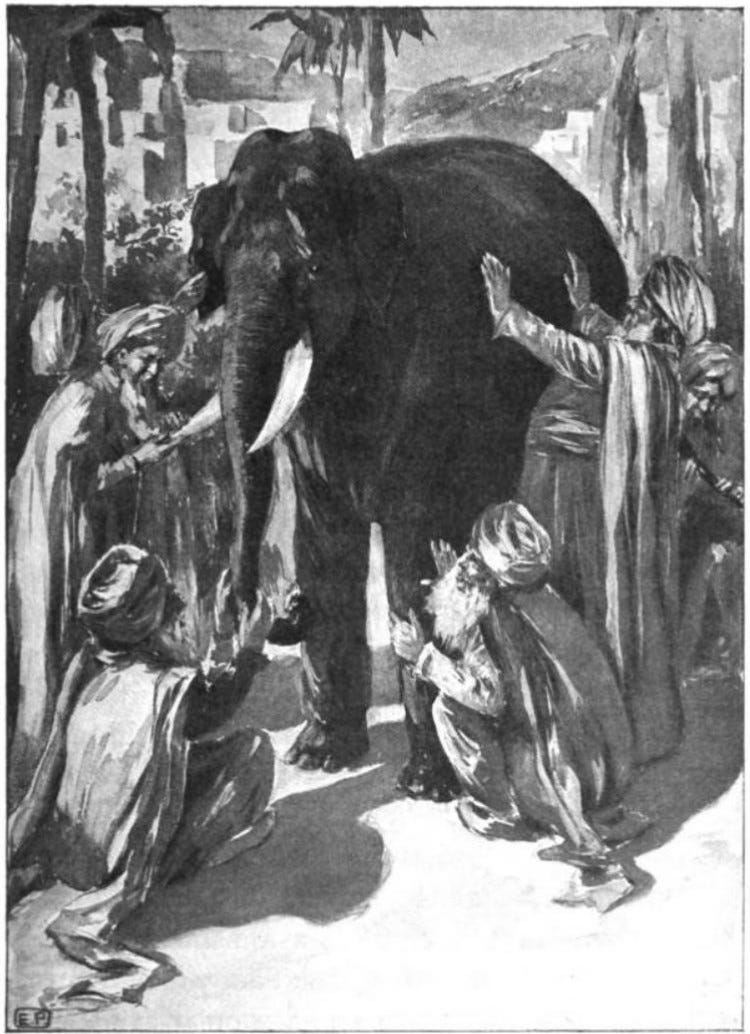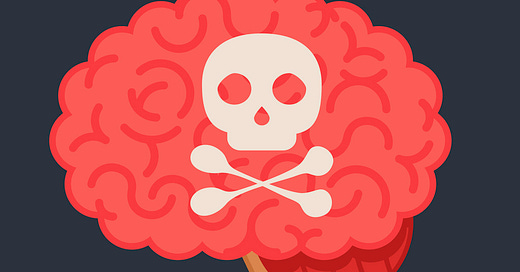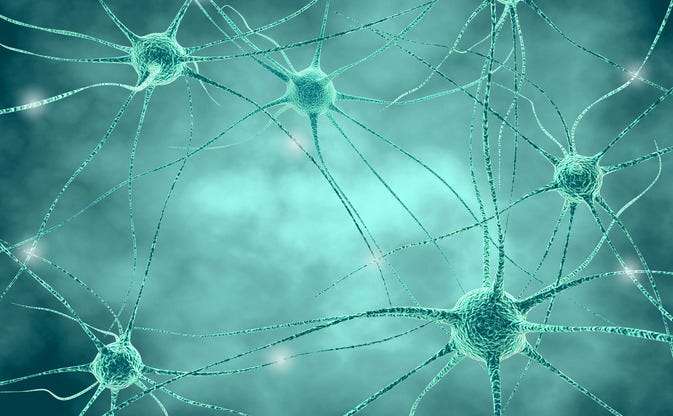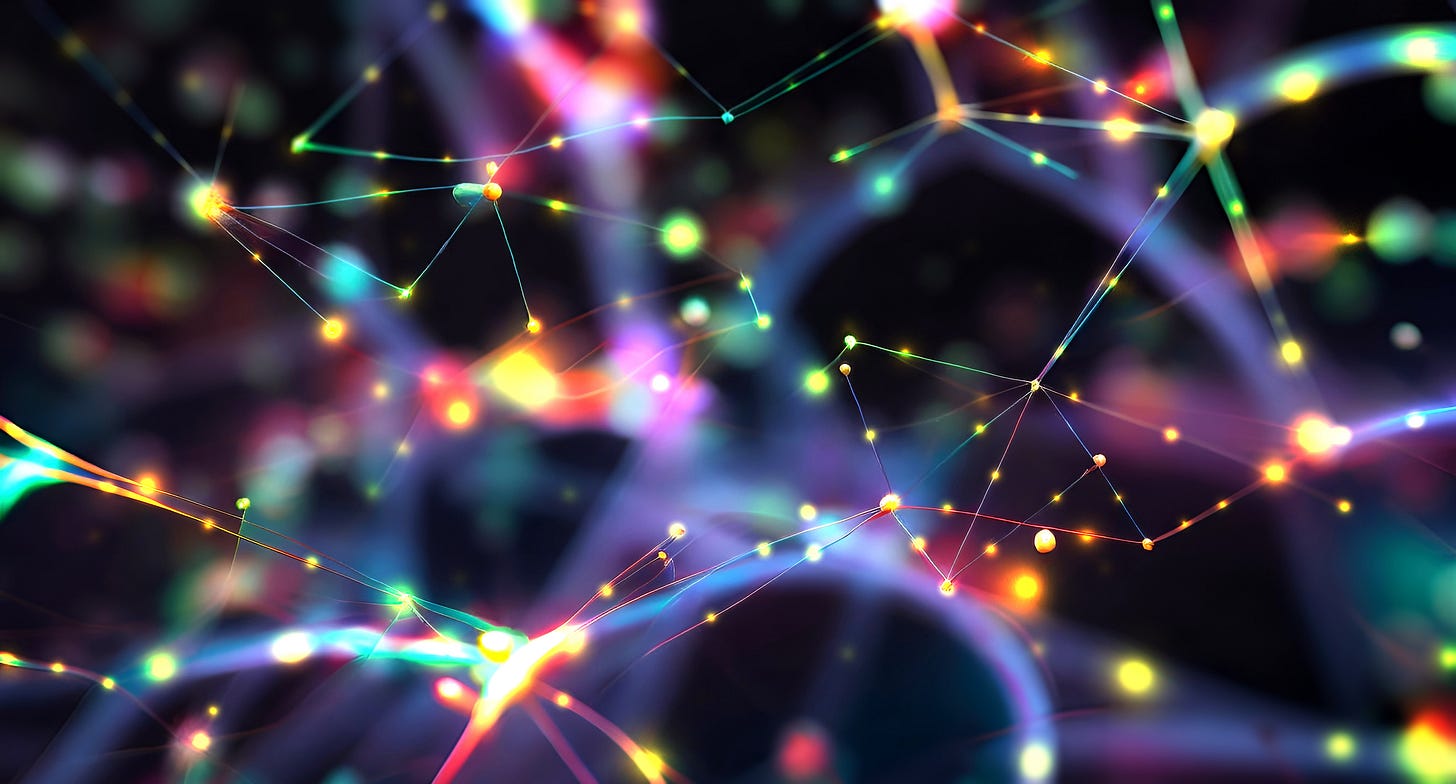This post is based on knowledge that’s irrevocably changed how I think and how I approach conversations and sharing knowledge with others.
It’s the most sobering knowledge I’ve come across in the last few years and although this post isn’t perfectly written I believe that the content is important enough to be shared now, instead of me trying to tweak it to a more perfect state.
However, reading it does come with a warning: If you truly understand what this knowledge means it will forever change the way you think, the way you talk to people about what you and they know, and how you learn anything new.
It will change your conversations because you’ll understand one of the reasons people hold onto ideas that are patently false and why they don’t change their minds about what they believe - even when faced with robust facts and figures.
Why?
Because the ‘feeling of knowing’ will supersede the strongest and most robust of evidence.
The ‘feeling of knowing’ can even overpower what we’ve seen and experienced ourselves.
If you’re curious about what the difference between ‘confirmation bias’ and ‘the feeling of knowing’ is:
Confirmation bias is the tendency to interpret new evidence as confirmation of one's existing beliefs or theories.
The ‘feeling of knowing’ doesn’t necessarily relate to comparing existing beliefs and theories to new information, because it can be activated by information you’ve got no frame of reference to compare the information to. However, it’s also often present when you encounter new information that confirms your current knowledge.
The ‘feeling of knowing’ relates to believing that what we’re feeling is knowledge about reality and about what’s happened.
Let’s start with a few stories to increase clarity:
The Challenger Explosion
Within one day of the 1986 Challenger explosion, where all seven crew members were killed, two psychologists, Neisser and Harsh, who were studying flashbulb memories (those linked to emotions) decided to start a fascinating research project. (1)
They asked their class of 106 students to write down exactly how they had heard about the explosion.
Where they’d been when they heard about the explosion
What they had been doing
How they felt about the explosion
Then, 2 1/2 years later, they interviewed these same students about this event.
The results surprised them because:
Twenty five percent gave strikingly different responses to what they had written down 2 1/2 years ago.
While 50% had lesser degrees of error.
However, less than 10% had all the details correct.
Prior to seeing their original journaling, most of the participants assumed that their memories were correct, and had varying responses when confronted with their conflicting accounts.
Most felt very confident in their false recollections, despite seeing their own handwriting.
One participants’ response sticks out very clearly:
‘That’s my handwriting, but that’s not what happened!’
In other words, they didn’t believe themselves.
Another research project, also aimed at assessing memory retrieval and accuracy around 9/11 found that: (2)
‘ … the defining characteristic of these flashbulb memories is the confidence in their accurate recall, rather than their true accuracy … and whether stress at the time of encoding merely improves the confidence of recall …’
Salna goes on to state in the research paper that:
‘ … confidence is not, in fact, a reliable indication of recall accuracy. The memories of witnesses in perceived life-threatening situations, where the perpetrator has a weapon, have been found to be impaired by a phenomenon known as “The Weapon Focus Effect.”
This is explained by witnesses giving great attention to a perpetrator’s weapon, rather than the perpetrator themselves, during a crime. This decreases encoding and subsequent recall of peripheral details, such as the culprit’s facial features or identifying tattoos.
Meta-analyses have confirmed this effect and cite its potentially damaging repercussions during unintentional errors in eyewitness identification … ‘
However, the confidence in the recall is also a challenge.
Why?
Because confidence is a feeling and isn’t based on what actually happened.
Although this research was aimed at assessing memory recall and the impact of emotion on such, it highlighted something more important:
How the ‘feeling of knowing’ superseded the reality, the facts.
The next story is a little different, because it involves romantic feelings, but still showcases this fascinating tendency:
To believe that how we feel is knowledge about reality, about what happened, even though it’s not.
This is where our physiology meets our mind, in which we get confused about what our physical sensations mean, which can spark thoughts that aren’t an accurate reflection of our experience, or reality, leading to inappropriate behavior and decision-making.
In this case, leading to embarrassment for a group of young men.
In 1974 researchers Aron and Dutton decided to perform an interesting experiment using two bridges in Vancouver Canada. (3)
The first bridge chosen for the experiment was 230 feet above a river, and it was chosen because it’s a swinging, wobbling bridge, where every footstep feels uncertain.
The second, control bridge was only 10 feet above the river.
In the first part of the experiment, on the wobbly bridge, the male participants made their way across the bridge, and then an attractive woman walked towards them with a survey form. She asked if they would be prepared to complete the survey, and when they handed it back to her, she wrote her telephone number at the bottom of one of the pages, tore it off and told the participants to give her a call if they wanted to speak about their experience.
In the second part of the experiment, the control group were addressed by the same women, but after crossing the low bridge.
The results were astonishing:
Fifty percent of the participants who walked across the wobbly, 230 feet high bridge called the woman.
But only 12.5% of the participants who crossed the safe modern bridge - at only 10 feet above the river - called the woman.
The participants on the high wobbly bridge experienced what is called a ‘missattribution of arousal.’
The intense feelings of fear and the adrenaline pumping through their bloodstream, which was actually a sense of fear, was missattributed by the participants on the high, wobbly bridge to a feeling of attraction towards the woman on the bridge.
So, the individuals misinterpreted (misattributed) their physiological arousal as stemming from their attraction to the female researcher.
They ‘felt’ something and took that as knowledge about a feeling of attraction.
They experienced a ‘feeling of knowing’ that they should contact the woman.
So, now we know that it’s possible to disbelieve our own factual recollection of the past, and our physical sensations can lead to thoughts that aren’t based on what is unfolding in real time. In this example, the young men thought they were attracted to the young woman, because of the sensation of fear they experienced.
Next, let’s examine what role emotions play in decision-making, via a sad, but natural experiment which occurred due to a brain tumor.
In 1982 a gentleman, referred to as ‘Elliot,’ walked into the offices of Antonio Damasio, who is a famous American, (of Portuguese origin) neurologist. (4)
One of Damasio’s most famous books ‘Descartes Error,’ strongly argues for a biological basis to decision-making, rather than what Damasio felt was a cool, detached, logical process espoused by Descartes, Plato and Kant.
A few months previously, ‘Elliot’ had a small tumor cut out of his orbitofrontal cortex. It’s just behind the eyes in the underbelly of the prefrontal cortex (PFC) - ‘orbita’ in Latin means eye-socket.
It’s also a key area of the brain for emotion processing, and is markedly larger in humans vs. other animals. (5)
After the surgery ‘Elliot’ started having problems in making decisions.
To put this into context, before surgery he’d been a model husband and father.
He’d held an important management job at a large corporation, and he was very active in his local church. His IQ was also in the 97th percentile.
But now, ‘Elliot’ was suffering with a problem that was proving to be debilitating.
He could not make a decision:
He couldn’t choose between a blue or black pen
He couldn’t choose what radio station to listen to
Or where to park his car
Or which restaurant to go to
He deliberated for so long about every decision that he became paralysed with in-decision.
He ended up getting divorced, being fired from his job, being hoodwinked by a conman, and had to declare bankruptcy.
He also moved back into his parents home.
Although these were very distressing circumstances for ‘Elliot’ to find himself in, Damasio found it more alarming that ‘Elliott’ felt no emotion, no frustration, no sadness about the terrible turn his life had taken.
‘Elliot’ was dispassionate and cold.
Damasio decided to check ‘Elliot’s’ galvanic skin response in relation to images that cause distress or joy for people when they view them, and found that he had absolutely no emotional reaction at all.
Up until this time, neuroscience assumed that a lack of emotion would be a benefit to decision-making as it would improve rationality and logic.
However, what Damasio observed with ‘Elliot,’ and later, what was found with other patients, is that if the brain can’t access emotion it can’t make decisions optimally.
Why am I explaining the importance of emotion to decision-making but warning against the ‘feeling of knowing?’
Without emotions (and what we label them, feelings) we can’t make decisions, but when our emotions or feelings become the primary driver behind our beliefs and decisions we can believe what isn’t true, what isn’t based on reality, such as in the ‘Challenger’ and ‘Bridge’ experiments.
Next, to understand more, let’s examine a phrase we’ve become used to tossing around, ‘cognitive dissonance.’
What’s ‘Cognitive Dissonance’ Got To Do With ‘The Feeling of Knowing?’
Stanford Professor of social psychology, Leon Festinger, introduced the term ‘cognitive dissonance’ in 1957.
This phrase describes a mental state in which a person can:
‘ … find themselves doing things that don’t fit with what they know or having an opinion that does not fit with other opinions they hold …’ (6)
Festinger designed a number of clever experiments to demonstrate that such tensions were often minimised or resolved through changes in personal attitudes vs. relinquishing the dissonant belief or opinion.
One of the most famous experiments involved a cult that believed the earth was going to be destroyed by a flood:
When the flood didn’t happen, those less involved with the cult were more inclined to believe that they’d been wrong.
However, those that were more heavily invested were more likely to reinterpret the evidence to support their belief.
Festinger’s seminal observation is that the more committed we are to a belief the harder it is to relinquish it, even in the face of overwhelming contradictory evidence.
As paraphrased by Robert Burton, the author of the fabulous book ‘On Being Certain:’ (7)
‘ … instead of acknowledging an error in judgement and abandoning the opinion, we tend to develop a new attitude or belief that will justify retaining it …’
We can simply re-evaluate our perception of past events and then change our mind about what happened, to create a narrative in our mind which allows us to maintain a coherent sense of self.
In this way we reduce our cognitive dissonance.
The cult members who were heavily invested used this re-evaluation trick to shift their internal narrative about the flood not happening.
They needed to do this to maintain a sense of coherence about who they were and their decisions.
They needed to believe that they’d been right about their previous decisions, to maintain their ‘feeling of knowing’ they were right.
Therefore, the more invested we are in the situation or outcome we’re faced with, the more we rely on our emotions and what we’re invested in, vs. what’s happened, the facts, and reality, or what could happen.
So, we need to be able to access emotion to make decisions, but we don’t like to change our mind if something that we believe, for whatever reason, ‘feels right.’
In other words, we’re prone to choose a false belief because it feels correct even when we’re faced with convincing contrary evidence.
More Evidence to Illustrate the ‘Feeling of Knowing’
The sense, or ‘feeling of knowing,’ involves a challenging-to-define mental state related to a sense of familiarity or a feeling of what is real.
Like the ‘tip of the tongue’ sensation, when you can’t access the word you’re looking for (technically called ‘lethologica’) or a feeling of déjà vu, both sensations provide a sense of familiarity which suggests we have some prior experience or knowledge related to what feels out of our cognitive reach.
However, the idea of an isolated ‘feeling of knowing’ seems ludicrous, because shouldn’t that feeling refer to something that we do know?
A ‘feeling of knowing’ does not have to be attached to a thought, because we now know that even seemingly inexplicable states of mind, such as intense religious experiences, are simply spontaneous chemical-induced emotions.
William James described mystical experiences that can be induced via a number of anaesthetics, including chloroform. (8)
The knowledge that the mystical experience is a result of simple neurochemistry doesn’t negate the certainty of God‘s existence for the person who experiences this feeling while they’re in this state.
‘ … The anaesthetic invoked the sensation of purity and truth without any reference to any specific idea or thought …’
Today, many people experience similar feelings when they’re under the influence of psychedelics, and refer to them as being powerful and influencing their lives after the event. However, these feelings seem to persist for longer than those induced in some people via anaesthetics. (9)
So, we can experience a feeling, which doesn’t originate from cognition/thought, but is based on altered neurochemistry, but becomes a ‘feeling of knowing.’
How Do We Know What We Know?
Burton suggests that we can start to understand the ‘feeling of knowing’ a little more if we take the time to examine our internal ‘chatter.’
He suggests that we ‘hear’ this ‘chatter’ in the same way as we ‘see’ an object in our minds eye, because both are ‘sensory representations of an internal state of mind, just as the ‘feeling of knowing’ is’ …’’ (7; p. 37) and can be observed on a fMRI, because of how the relevant areas light up with neural activity.
‘ … We perceive our external world through primary senses like sight, sound and smell, and we perceive our internal world through feelings such as familiar or strange, real or unreal, correct or incorrect, etc …’ (7; p. 37)
Where does this leave us?
‘Essentially, everything that the brain does is accomplished by the process of synaptic transmission.’ (10)
What does this mean in relation to cognition?
A thought can begin the moment we sense something, for example, we may feel cold and then think ‘I need to get a sweater.’
However, more complex thoughts may take longer to emerge. For example, you may have been grappling with a challenge for days, weeks, or even years, and suddenly a thought emerges about this challenge that provides you with a new insight.
Until that thought reaches your awareness it’s been silently working its way to consciousness.
But, how do you know whether it’s a useful thought?
A ‘feeling of knowing' may imbue the thought with a sense of accuracy or usefulness, but this may be the result of a number of feelings, including but not limited to the thought feeling familiar, or the need for a resolution.
Before we look at solutions to this dilemma, let’s examine the role that technology plays in our ‘feeling of knowing.’
How We Access Information Influences How We Feel About It … Seriously!
Research by Hamilton showed that finding information on the internet leaves people more confident about a topic than they should be: (11)
‘ … When people have immediate access to explanations through features that enhance access to information, external retrieval fluency may serve as a heuristic for internal knowledge confidence.
Search engines that contribute to the immediate retrieval of external information may inadvertently strain Internet users’ ability to distinguish between mind and machine as the source of their knowledge …’
And,
‘ … it can be challenging for those who rely on the Internet to distinguish between what they know and what the Internet “knows” … ‘
The speed of access to the information influences the confidence we feel about how well we know what we’ve accessed.
So, next time you think you understand a topic because you scanned an article, research paper or blog post, or ‘Googled’ or ‘ChatGPTd’ it, ponder this phenomenon.
Think about how quickly we can all access information today, and how we make decisions based on what we think we know, when it’s really based on what we ‘feel we know.’
It’s a ‘feeling of knowing’ that leads to this confidence, not a deep understanding of the topic.
And, in conversation we’re also susceptible to the ‘feeling of knowing.’
What About Sharing Ideas?
Most conversations are a quick exchange of feelings, ideas and thoughts, all of which emerge quickly as we talk.
It’s therefore easy to fall for the ‘feeling of knowing’ when talking because before the whole idea is conveyed by the other person - or yourself - you’re already ‘feeling’ whether it makes sense.
As Burton states:
‘ … the feeling of knowing will be triggered prior to full perception of the incoming idea, yet feel as though it followed consideration of the idea …’ (7, pg. 77).
Next time you’re listening to a conversation, for example, on a podcast, observe your internal chatter.
You’re able to be critical of the ideas shared because you’re not involved in the back-wards-and-forwards of natural conversation. We can more easily see pitfalls in logic, evasiveness and shallowness when we listen to others converse.
This challenge with conversation also sheds new light on why we can’t as easily come up with pithy replies in the moment - when we look back however, time has provided the luxury of being critical and succinct in response.
We’re not operating as deeply within the ‘feeling of knowing’ part of a conversation when we’re listening to one vs. when we’re personally involved.
However, when we listen to people who believe what we already believe, and share knowledge that we agree with, a ‘feeling of knowing’ can consolidate our perspective.
So too can our trust in new information they share with us, because we trust them.
Let’s add modern life to the mix, vs. a time when tigers were a threat, to see how it contributes to the ‘feeling of knowing’ challenge in a different way.
Modern Life and Assessing Our Thoughts
As mentioned, there is a reason that the ‘feeling of knowing’ phenomenon exists within our neurophysiology, because if it didn’t serve a purpose, it wouldn’t have survived.
Feelings of discomfort and unfamiliarity lead to a physiological response that drives our behavior to find comfort and familiarity again. After all, what doesn’t ‘feel’ right is based on our senses picking up cues from our environment that aren’t yet fully conscious.
Emotions travel significantly faster in the brain vs. thought, for this very reason.
Our survival hinges on us physically moving before we’re 100% sure there’s really a tiger in the bushes. (10)
However, our brain is today grappling with more complex emotions and abstract concepts than it had to deal with when tigers were our primary threat.
We don’t have clear answers to the challenges we’re dealing with - no clear, distinct, precise solutions.
Certainty is significantly less accessible than it was when physical survival was our primary goal.
As Burton states,
‘ … in order to pursue a new thought we must feel the thought is worth pursuing BEFORE we have any supporting evidence or justification. Otherwise, we would only consider ideas we already know to be correct … ‘ (7, p.90)
This means that there are many more opportunities for us to ‘feel’ an idea, or information vs. when life was simpler, and we had significantly less information at our fingertips.
We need emotions, and what we call them, feelings, to be able to make decisions but we can’t rely on the ‘feeling of knowing’ to be an accurate reflection of reality, facts and our knowledge.
So what are we supposed to do about this serious and growing challenge?
The options below provide some guidance in not getting stuck in the ‘feeling of knowing.’
Are There Solutions to the ‘Feeling of Knowing?’
Firstly, we need to consider that the ‘feeling of knowing’ has some practical value, and is linked to a process of reasoning. If it didn’t serve a purpose, we’d not be capable of experiencing it. (7)
Burton suggests we use the following three options to assess what we know, and how we know it:
Option 1: A ‘feeling of knowing’ pops into our mind without a thought, and feels ‘mystical,’ and we provide an explanation or interpretation (cognition) after we feel the feeling. This is also known as ‘retrospection.’
For example, after a religious ‘experience’ we can label it a moment of divine revelation. And it becomes a memory we can refer to.
Furthermore, the more powerful an experience feels, and the more often it occurs, the greater the ‘link’ between a decision and the feeling that it’s the right one.
In other words, the intensity of a ‘feeling’ is linked to how correct we think a decision is.
Option 2: We experience an ‘Ah Ha’ moment, which is when a number of unconscious associations become conscious and we infuse them with a sense of being correct.
Many great scientists have spoken of how, suddenly, a thought ‘hits’ them or ‘pops” into their mind.
So, we experience the thought and the feeling of it being correct simultaneously - it feels like a ‘moment of truth.’ (7;p. 87)
Many people refer to this as a ‘gut’ feeling.
Daniel Kahneman (1934-2024), who is well known for his work on the psychology of judgment, decision-making and behavioral economics, adds some important insights to this option, about when to trust ‘gut’ feelings. (12)
Firstly, Kahneman believed that two cognitive biases influence our ‘gut’ feelings:
• The ‘availability’ heuristic, wherein we judge the likelihood of being correct on how easily examples of such come to mind, and
• The ‘framing effect’ which refers to how a question is presented, which impacts the answer.
Secondly, Kahneman stipulated three conditions had to be met for our ‘gut’ feelings to be trustworthy:
1) The order of the ‘hunch’ needs to be a regular occurrence, for example, in a game of chess we’re often faced with the same order of moves and countermoves, and
2) We’ve had lots of practice experiencing this ‘hunch’ and,
3) We get immediate feedback on whether we’re right or wrong.
Kahneman believed that unless these three conditions are met, we should not trust our gut - our intuition – because it may be incorrect.
So, despite being exhorted to follow our ‘gut’ instincts, this is not reliable advice.
It’s based on a ‘feeling of knowing.’
Kahneman believed that when we trust our intuition, we think we know without knowing why we know.
Just because we feel a sense of confidence in an idea does not guarantee the accuracy of the information.
Our ‘gut’ could be very wrong even though we like the idea that’s come to mind, and we feel confident in our ability to make good decisions. The idea may even feel familiar.
You can see clearly that this is related to the ‘feeling of knowing’ - we ‘like’ the idea that’s come to mind, and we have a feeling of ‘confidence,’ a ‘feeling on knowing,’ that it’s right and based on fact or reality.
Liking and confidence, also feelings.
Option 3: We encounter an idea for the first time, and it’s objectively correct, in the same way you know an answer is correct, or whether you’ve found your favorite coffee cup in the cupboard.
The only way to know for sure whether a ‘feeling of knowing’ is based on a justifiable conclusion is to assess how you came to have the feeling, according to which one of these three scenarios occurred, including Kahneman’s insights.
Apart from using the three options above, and Kahenman’s ‘gut’ test, another way to establish whether we have a true grasp of a topic is to use what’s referred to as the ‘Feynman Technique.’
Richard Feynman was one of the 20th century's greatest theoretical physicists and a Nobel laureate. He was known for his work in quantum electrodynamics, quantum mechanics, superfluidity, and particle physics. (13)
Feynman suggested that if you want to learn something, and be sure you’ve grasped it fully, you need to do four things:
Study the topic,
Teach the topic to someone as if you’re teaching a child,
Identify the areas where you struggle to convey the idea/s, and
Simplify the topic by reviewing it again so as to refine your understanding.
Feynman believed that people often use complexity and jargon to mask a lack of understanding.
He believed that his four-step approach allows us to learn effectively because when we can explain something simply to others we find out what we’re not clear about, go back and get clear on those areas, and in so doing consolidate our knowledge.
This allows us to both explain AND use our new knowledge in a variety of situations.
Some Useful Questions to Ask Yourself
In addition, you can also ask yourself the following questions when you sense you may be falling prey to a ‘feeling of knowing:’
How have I come to this conclusion?
How do I feel about this knowledge?
Do I really need to read this book/article/post etc, or am I just going to skim it which leaves me vulnerable to the ‘feeling of knowing?’
Am I relying on my trust of someone about this idea vs. the knowledge?
Does it confirm what I have always believed, or is it contradictory?
Am I mistaking a sense of confidence, familiarity or deju-vu, for knowledge?
Am I mistaking a physiological response for knowledge, such as in the case of ‘misattribution of arousal?’
Did I find this knowledge online quickly and may therefore be overestimating my understanding of the topic?
If I’ve always done something a specific way, does it mean that I have to keep on doing it that way - is it necessarily the best way in this situation?’
And finally, does it feel pleasurable to embrace this ‘feeling of knowing?’ Our ‘feeling of knowing’ is linked to our reward system, because of the role that pleasure plays in our survival. Discomfort with an idea may be a vital clue that it’s worth stretching your cognition outside of its comfort zone.
In Summary …
Our memories aren’t as reliable as we think they are, and how we feel about the memory of an event/s isn’t necessarily an accurate reflection of what actually (factually) happened.
We can misattribute physical sensations, which can lead to thoughts that aren’t an accurate reflection of what occurred, leading us to behave in ways that aren’t congruent with facts and reality.
Our brain doesn’t like trying to reconcile two different beliefs or ideas, termed ‘cognitive dissonance,’ which can make us susceptible to choosing a false belief because it feels correct - especially when we have a lot invested in that belief and being right - despite being faced with convincing contrary evidence.
Altered neurochemistry can lead to a ‘feeling of knowing,’ and even when the neurochemical imbalance is restored, we can hold onto the feeling as a belief, even though it’s not based on reality.
Some thoughts appear nearly instantly, in response to our immediate environment, while others take longer to move from our subconscious to our conscious mind, but all are susceptible to the unreliable ‘feeling of knowing.’
When we access information quickly we feel confident that we know the accessed information well, but this isn’t a true reflection of deep knowledge, facts or reality.
In conversation, we are susceptible to the ‘feeling of knowing’ because we speak and listen in conversation before ideas are conveyed in their entirety.
Today our brain is grappling with many abstract and complex challenges to which we don’t have clear solutions so we’re more susceptible to the ‘feeling of knowing’ because it saves neural energy vs. deep contemplation.
The ‘feeling of knowing’ is linked to our reward system, which means that it feels more pleasurable to have what we believe and already know confirmed, vs. it being dis-confirmed. In addition, even if we don’t have prior knowledge about something, a ‘feeling of knowing’ can override reality and facts.
There are ways to check and see if you’re falling prey to the ‘feeling of knowing,’ which includes knowing what type of knowledge you’re assessing, using the ‘Feynman Technique’ to teach yourself something you may be overly confident in ‘feeling’ you know well, and asking yourself specific questions.
In conclusion
Our emotions and cognition are intimately and inextricably linked deep within our neurophysiology. We cannot separate them, and neither should we try to, as the case of ‘Elliot’ clearly illustrates.
However, we should be vigilant about how we arrive at conclusions because we cannot shy away from falling victim to the ‘feeling of knowing.’
As most educational institutions today don’t focus on teaching critical thinking, and have instead focused on how people feel about things, many people now see their emotions (and feelings) as directives, not messages.
They don’t think critically because they don’t know how to, and believe that how they feel is knowledge about facts and reality.
Having constant access to information that makes us feel comfortable, consolidates this ‘feeling of knowing’ that we’re right.
And our algorithms ensure we’re seldom confronted with knowledge that makes us feel uncomfortable.
This is especially important in a world where so-called experts and ‘Influencers’ hold very strong opinions that are often based on their ‘feeling of knowing,’ which they flaunt confidently, and too many of us buy into, because their confidence imbues us with a ‘feeling of knowing.’
Having a ‘feeling of knowing,’ in very complex situations, or generally, in our new reality of exponential change, is one of the most dangerous things we’ve ever encountered because it makes us feel confident and knowledgeable, when instead we may be confident but deeply ignorant.
Let’s use a currently popular topic as an example. Innumerable people involved with AI currently ‘feel’ as if they’re got a deep understanding of what’s happening in this area, because they’re knowledgeable about one or two aspects of its development and functioning.

Instead, they’re similar to the men in the room with the elephant - each only knowledgeable about one or two aspects of what they’re contemplating, but, imbued with confidence, a ‘feeling of knowing,’ they’re very knowledgeable.
Despite the field growing exponentially, with too many layers of complexity for any one person to fully grasp.
Of course, this situation isn’t only applicable to this topic.
Unfortunately, the tsunami of information available today combined with our increased ‘feeling of knowing’ when we access information quickly, leads to many people believing they know significantly more than they do.
This means our depth of expertise based on evidence is dwindling while we’re under the illusion that we know more than we do.
Our inherent, and neurophysiologically driven desire for ‘quick-fix’ solutions means we don’t naturally gravitate to deep, critical thinking, but prefer instead to focus on one aspect of a challenge and solution that makes us feel comfortable and leaves us with a ‘feeling of knowing.’
This is how we maintain an internal, coherent sense of self, which means we’re all susceptible to the seductive ‘feeling of knowing.’
Our tendency to believe that how we feel is knowledge about reality, about what happened and what is fact, even though it may not be accurate, is dangerous.
As a species, this leaves us vulnerable in ways we’ve never been vulnerable before.
Please read more about how the amount of information we have available is impacting us here:
Please read more about neural energy here:
References
(1) Neisser, U. & Harsh, N. (1992). Phantom flashbulbs: False recollections of hearing the news about Challenger. In Winograd, E., & Neidder, U. (Eds). Affect and Accuracy in Recall: Studies of flashbulb memories. New York: Cambridge University Press.
(2) Salna, M (2017) How Much do We Really Remember About 9/11? A Critical Analysis of the Neuroscience Behind Flashbulb Memories. WUPJ, Cognition, Volume 1.
(3) Dutton, D. G., & Aron, A. P. (1974). Some evidence for heightened sexual attraction under conditions of high anxiety. Journal of Personality and Social Psychology, 30(4), 510–517.
(4) https://dornsife.usc.edu/profile/antonio-damasio/ (Cited 31 January 2025.)
(5) Edmund T Rolls, Wei Cheng, Jianfeng Feng (2020) The orbitofrontal cortex: reward, emotion and depression, Brain Communications, Volume 2, Issue 2.
(6) Festinger, L. A (1957) Theory of Cognitive Dissonance (Stanford: Stanford University.)
(7) Robert Alan Burton (2008) On being certain: believing you are right even when you're not. New York: St. Martin's Press.
(8) Williams, J (1902) The Varieties of Religious Experience: A Study in Human Nature, Being the Gifford Lectures on Natural Religion Delivered at Edinburgh in 1901–1902.
(9) Schutt, W.A., et al (2024) Psychedelic experiences and long-term spiritual growth: a systematic review. Curr Psychol 43, 26372–26394.
(10) J LeDoux, J. E. (2002) Synaptic self: How our brains become who we are. New York: Viking.
(11) Hamilton, K. A., & Qi, L (2023) Search Fluency Mistaken for Understanding: Ease of Information Retrieval from the Internet Inflates Internal Knowledge Confidence.
(12) Kahneman, Daniel, 1934-2024 (2011). Thinking, fast and slow. New York :Farrar, Straus and Giroux.
(13) Harahap, A.R. (2020). An Alternative Method Of Online Learning Using The Feynman Technique.

















Great piece. The Feynman Technique truly resonates and I’m going to keep the list of useful questions handy in an effort to track my own belief patterns.